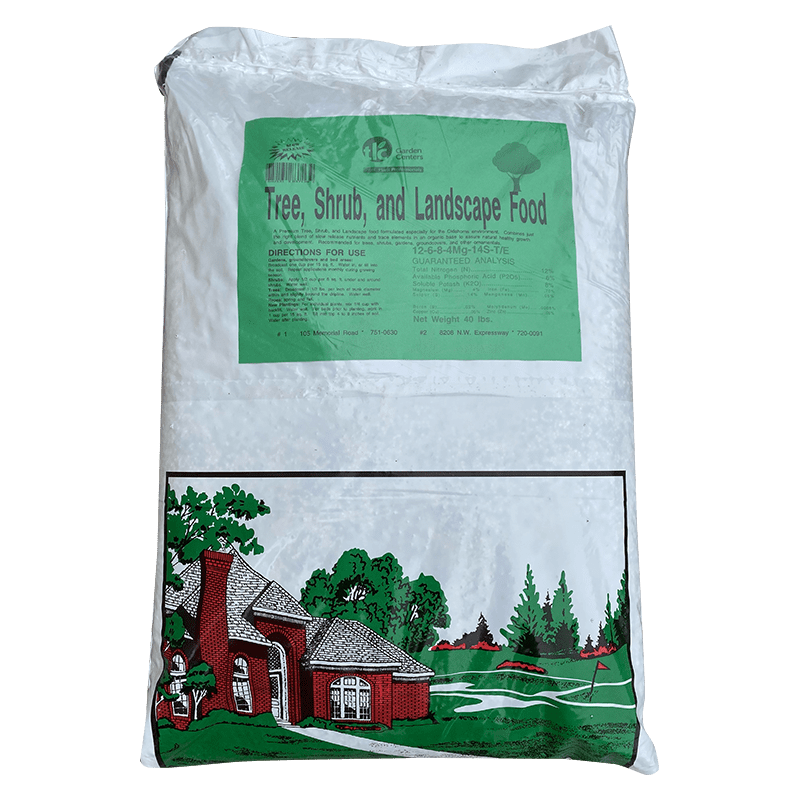Striking the Right Balance
Reasons to Analyze Soil
Soil testing provides a starting place for soil improvement. Unless you know the problems in your garden soil, you are only guessing when you apply fertilizer. For soil testing information, contact the Oklahoma County Extension Center, 2500 NE 63rd St, Oklahoma City, (405) 713-1125.
- Learn what type of soil composition you have (clay, sandy etc.)
- Find out what your soil is lacking (nutrients, micronutrients, etc.)
- Pinpoint soil pH (alkaline or acidic)
- Bring your results to TLC Garden Centers and we will help you determine how to amend your soil for the best results
Fertilizers
Fertilizers are used to prevent or overcome nutrient stress in plants. Fertilizers usually contain one or more of three important elements—nitrogen, phosphorus and potassium.
N (Nitrogen) is needed for the development of dark, green color in plants. It is essential for rapid and continuous vegetative growth.
P (Phosphorus) aids plants in getting off to a rapid, vigorous start, promoting early root formation, stimulating blooming and seed production, and hastening maturity.
K (Potassium or Potash) is needed for plant health and disease resistance. It is important in ripening of fruit and helps to develop full, plump seeds.
Bags of fertilizer contain three numbers, such as “5-3-3”, which represents the percentage of Nitrogen, Phosphorus and Potassium (N-P-K) in that bag. For example: a bag of 5-3-3 fertilizer contains 5% N, 3% P and 3% K. Fertilizers may also supply other elements or micro-nutrients essential for the growth of healthy plants.
Slow- Vs. Quick-Release Fertilizers
“Slow release” means that the nitrogen does not dissolve in water. The nitrogen must be broken down by soil microbes and chemicals to be in a form that plants can use. Slow-release fertilizers, since they do not leach quickly, can supply nutrients to plants for a longer period than quick-release forms. TLC Tree, Shrub, and Landscape Food and Osmocote Plant Food are both good slow-release fertilizers.
Quick-release fertilizers easily dissolve in water. They are fast enough to quickly correct deficiencies. Quick-release is best used in combination with a slow-release fertilizer. TLC Garden Max and Miracle-Gro are good quick-release fertilizers. Most plants will respond best to a fertilizer program that includes both quick- and slow-release fertilizers.


Every kind of plant as different fertilizer requirements. We’re happy to help. Ask an expert at TLC for specific fertilizer recommendations.
Correcting Soil pH
The measure of the acidity or alkalinity of soil is referred to as the “soil pH” and is determined by a soil test like the one mentioned above. If the soil test shows the soil is too acidic, lime can be used to bring the soil into an optimum pH range. If the soil is too alkaline, sulfur is used to reduce the alkalinity. On the pH scale, soil that is neutral will have a reading of 7.0. Readings below 7.0 indicate the soil is acidic, while those reading above 7.0 indicate an alkaline condition. Vegetable crops, as a group, prefer a slightly acidic soil of about 6.5 pH.
Bed Preparation & Planting
- Remove existing grass and weeds.
- Dig the hole twice the width of the root ball or container – or prepare the entire bed area.
- Prepare the soil with a mixture of 50% Back To Earth™ Composted Cotton Burrs and 50% existing soil.
- Add a 3” layer of Expanded Shale for heavy clay soils.
- Plants should be planted with the top of their root system level or slightly higher than the surrounding soil.
- Backfill the hole with the prepared soil and Osmocote Plant Food. Tamp the soil firmly around the root ball to eliminate air pockets.
- Immediately after planting, slowly water the plants until the soil is saturated. Later in the day, water a second time using Fertilome™ Root Stimulator to stimulate root growth.
- Finish by applying a 3” layer of Western Red Cedar Mulch, Grade A Cypress Mulch or Pecan Hulls.
Every kind of plant as different fertilizer requirements. We’re happy to help. Ask an expert at TLC for specific fertilizer recommendations.